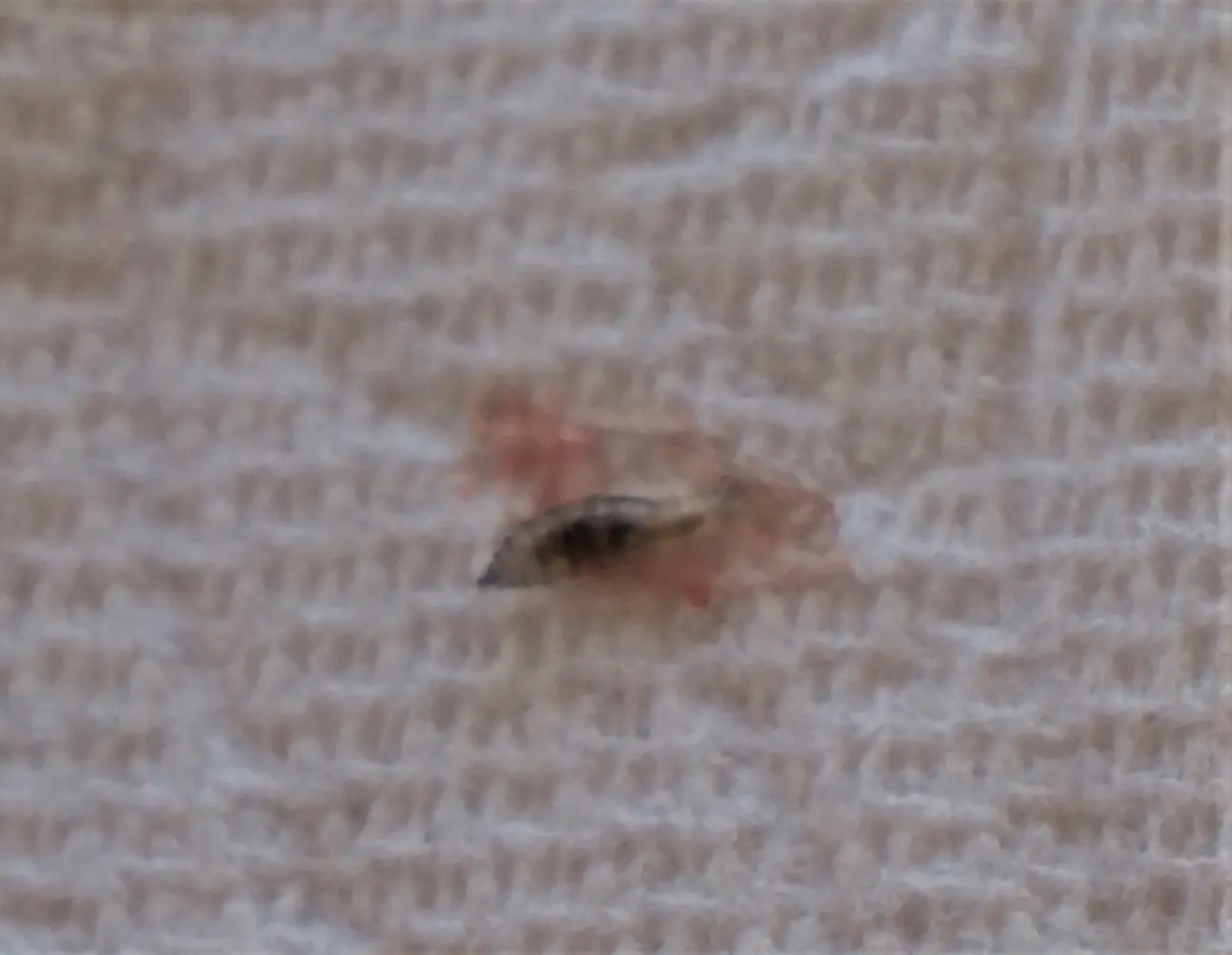Cuterebra in Dogs Questions and Answers

Cuterebra in dogs — also called warbles, botfly larva, and straight-up maggots — rank pretty high on the yuck scale. Yes, in some cases, they can be dangerous too. Based on real-life experience with them over the years, let me answer some common questions in case you ever need to know. To see what cuterebra holes look like and what cuterebra themselves look like scroll all the way down. That way I don’t accidently gross anyone out. Your choice to scroll that far, or not.
What are cuterebra in dogs ?
Basically, cuterebra in dogs are fly larva that burrow into pets’ skin, creating a bump with a breathing hole that often weeps with kind of bloody goo.
It’s really common for stray kittens, in particular, to get absolutely infested with warbles. A friend who works at a big animal shelter in Colorado said they took 10 of them off a tiny kitten last week.
How do dogs get cuterebra under their skin?
They pick up the larva from the ground / grass near where rodents nest or have been. In our case, the dogs likely pick them up while digging in the pastures for voles. See this lifecycle graphic.
What time of year are cuterebra most common?
Typically, late summer and fall in most climates.
Where do warbles attach on dogs bodies?
Botfly larva often attach on dogs necks or near their armpits, especially if they really dig into rodent burrows, but they can attach pretty much anywhere, including their backs and sides and such.
How fast do cuterebra in dogs grow?
Remarkably fast really, so if your dog develops a kind-of-squishy skin bump that gets bigger every day, suspect a warble. Look for that telltale breathing hole. If not removed from a dog’s skin, botfly larva typically pop back out and fall off about 30 days later.
Are cuterebra in dogs dangerous?
They can be, if they get into the eyes, nose, mouth, bottom, or other perineal areas and then migrate to the brain or spinal cord. Infection is also possible since they break the skin barrier and live in there a while. Maggot = gross under any circumstances.
Can I remove warbles in dogs myself?
Probably not, unless as my VERY experienced dog/cat friends say … “you have skillz.” The reason is that you risk rupturing the maggot or not getting all of it out, which can result in a dangerous, life-threatening allergic reaction called anaphylaxis in some pets. File this under “do as I say, not as I do,” since I indeed remove cuterebra myself successfully.
Real-life experience with cuterebra
The first time our original canine heroine, Lilly, got a cuterebra under her skin our DVM at the time asked, “How squeamish are you?” When I said, “Not very,” he showed me a really gross and BIG thing he’d pulled out. Eeeeeeee!
Later, when Lilly got a bunch more while taking massive immune suppressants, I learned to remove them myself, which again is NOT recommended for the vast majority of pet lovers. We often joked that Lilly was a “Larva Rancher,” growing them special. (ha ha)
Unfortunately, since we live in a rural area with lots of rodents, we still sometimes experience cuterebra in dogs. Clover, in particular, gets them. So far Tori and Mr. Stix have not, even though they probably dig around rodent holes more than she does. Maybe Tori’s dense coat and Mr. Stix’s wiry outer coat protect them more.
The first time Clover got a warble under her skin I wasn’t sure that’s what it was, so I ran her down to the veterinary hospital. Our current veterinarian took her to the back got it out and cleaned it up and sent us home.
So last week, when Clover started fussing at — licking and looking — a spot on her back, we felt for a bump and found one. I wasn’t 100% sure that first evening it was a botfly larva under the skin. So, I figured I’d look the next morning and maybe get her a DVM appointment, if necessary.
Except, when I looked the next morning, I literally saw it wiggling inside the hole in her skin. Gack! I hollered for the tweezers — yes, plain eyebrow tweezers. And, I carefully reached in with the tweezers and pulled the warble out whole. Victory!
My next steps included:
- Wiping away the hole goo
- Seeing the cuterebra come up for air
- Carefully grabbing it with tweezers
- Flushing the cuterebra hole in the skin with saline
- Flushing the cuterebra hole in the skin with rubbing alcohol
- Taking photos of both the hole and the now-removed cuterebra
- Sending those photos with a note to our veterinary hospital, asking if we needed to do anything else, like maybe pick up antibiotics or something
- They called later and left a message saying I’d done a “good job” getting it out and cleaning it and that Clover needed nothing else — unless the hole didn’t start healing on its own or began looking infected.
- It scabbed over and seems to be healing fine. Yay!
- They called later and left a message saying I’d done a “good job” getting it out and cleaning it and that Clover needed nothing else — unless the hole didn’t start healing on its own or began looking infected.
Thankfully, it had NOT gotten very big at all because Clover let us know right away something was wrong. Must feel really gross to have it wiggling under the skin. The ones pulled from Lilly in years past were HUGE in comparison, like 100-200% bigger than the one in the photo below.
When the warbles get bigger with bigger breathing holes, I’ve also seen veterinary pros kind of pop them out with their fingers (like a pimple), but it seems safer to me to grab them with a tool (gently).
Funny story …
Years and years ago, I worked at a veterinary conference, and I could hear what sounded like people watching fireworks — oohs, ahhs, gasps, cheers — coming from one of the lecture rooms. I walked down to see what the heck. Someone was showing photos and video of cuterebra removals in dogs and cats. Ha!
And, finally cuterebra in dogs photos
I warned you. Pretty gross.
STOP SCROLLING NOW IF YOU’RE SENSITIVE
This is the warble breathing hole after I removed the botfly larva and cleaned the hole.
And, this is the cuterebra itself. Again, it probably only lived under Clover’s skin for a day or 2, so it didn’t have a chance to grow much. Don’t let this fool you. They can get huge. Gack!


